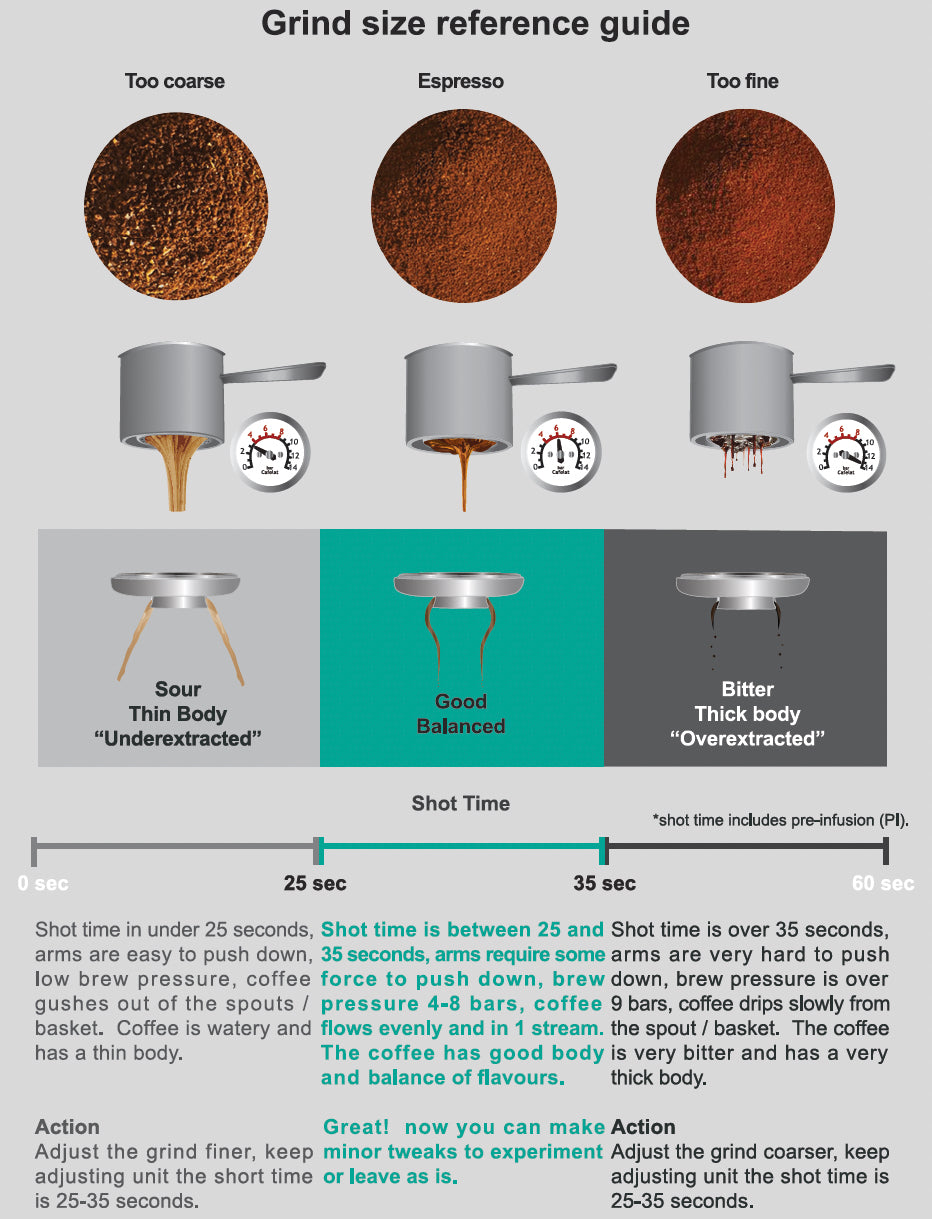How to Time Espresso Extraction
As a home barista, mastering espresso extraction timing can take your coffee experience to new heights. Espresso is all about finding the right balance between timing, grind size, and extraction flow. While it might seem intimidating at first, once you understand the nuances, the process becomes both rewarding and enjoyable.
Why Timing Matters
Timing your espresso extraction is crucial for consistency and flavor control. It determines how much of the coffee's flavor is extracted during brewing. If your extraction time is too short, the espresso will be under-extracted, leaving it sour, sharp, and lacking body. Conversely, extracting for too long leads to over-extraction, resulting in a bitter taste with an unpleasant aftertaste.

How to Time Espresso Extraction
There are two common approaches to timing espresso extraction. You can either start the timer the moment the pump begins or wait until the first drip of espresso appears in the cup. I recommend starting the timer as soon as you press the espresso button. This way, you capture the pre-infusion time, ensuring a consistent result.
Ideal Extraction Time
A typical espresso extraction should last between 25 to 35 seconds. In my experience, aiming for around 30 seconds is a good baseline. If your espresso extracts in less than 25 seconds, it's likely under-extracted and will taste sour and weak. If it takes longer than 35 seconds, the espresso is probably over-extracted, giving it a bitter taste.
Adjusting the Grind Size
The timing of your espresso extraction is heavily influenced by the grind size. A finer grind slows down the extraction process, while a coarser grind speeds it up. For example, if your espresso shot is pulling too fast (under 25 seconds), the grind is likely too coarse. If it takes longer than 35 seconds, the grind might be too fine. Dialing in the correct grind size for your espresso grinder can dramatically improve your coffee.
How to Test Your Espresso
While timing is important, taste is the ultimate measure of a good espresso. A balanced shot should have a pleasing mix of sweetness, acidity, and body. If your espresso tastes sour and thin, it's likely under-extracted, and you may need to grind finer or adjust the brew ratio. If it's bitter and dry, you've likely over-extracted and need to either grind coarser or shorten the extraction time.
Troubleshooting Common Issues
Here are some helpful guidelines for diagnosing and correcting espresso extraction issues:
- Under-extraction: If the shot pulls too quickly (under 25 seconds) and tastes sour or flat, the grind is likely too coarse. Try grinding finer and attempt the shot again.
- Over-extraction: If the shot takes too long (over 35 seconds) and has a bitter or dry aftertaste, the grind is likely too fine. Adjust to a coarser grind to speed up the extraction.
Pre-Infusion Time
Pre-infusion can also affect extraction timing. Some espresso machines, particularly higher-end models, include a pre-infusion phase where water is applied to the grounds before full pressure is reached. Including this time in your overall extraction helps ensure accuracy and better results. If your machine doesn’t have automatic pre-infusion, you can manually simulate this by briefly starting and stopping the pump before brewing.
Experimenting with Brew Ratios
The brew ratio—how much coffee you use compared to the liquid espresso produced—also impacts extraction. A common starting point is a 1:2 ratio (e.g., 18 grams of coffee grounds yielding 36 grams of espresso). However, experimenting with this ratio based on the beans you’re using can unlock different flavors.
For lighter roasts, you might find that extending the extraction or using a lower brew ratio (e.g., 1:2.5) highlights the brighter, fruity notes. Darker roasts typically benefit from sticking closer to the 1:2 ratio, which reduces bitterness while maintaining body and richness.

The Role of Tasting and Sensory Evaluation
While timing is an important factor, taste should always be your final guide. Even if you hit the perfect extraction time, the shot may still need adjustments in grind size or brew ratio. By experimenting with different variables and paying close attention to the taste, you’ll be able to fine-tune your espresso-making skills.
Mastering espresso extraction takes practice, patience, and careful observation of timing, grind adjustments, and tasting. By focusing on these key elements, you’ll soon be pulling the perfect shot every time.
